Serviços Personalizados
Journal
Artigo
Indicadores
Links relacionados
Compartilhar
Vista. Revista de Cultura Visual
versão On-line ISSN 2184-1284
Vista no.8 Braga dez. 2021 Epub 01-Maio-2023
https://doi.org/10.21814/vista.3502
Visual Projects
Masks of Ourselves
1 Departamento de Comunicação e Artes, Universidade de Aveiro, Aveiro, Portugal
“I am the truth, I believe — part of the divine nature — I am made of time, memories, and the marks of what I know, have seen, and lived”. After much thought about answering the question "who are you?" again, that phrase stuck in my mind. That was the most concise rationalisation of the 1,000 paths we might take to structure an answer about ourselves when summoned — to gather and clothe ourselves with our truths.
Questioning who we are may seem strictly personal, but such questions are exactly how the face of who we are in the eyes of others is acknowledged. We are conferred a power of self-knowledge that has its unique definition questioned when our existence is beyond ourselves alone.
This visual essay uses frames from the video art Da Verdade e do Tempo (From Truth and Time; Santiago, 2020). It is an outcome of the proposal to create under self-reflection and self-representation. The selection of images portrays a narrative that transitions from an intimate sphere to a sphere of manifestation in a somewhat "self-limited" way. It establishes a dialogue between personal identity and its possible change in reading when shared — what I see and what others can see.
The title of the essay, "Masks of Ourselves", alludes to the dialogue between the mask and what it may come to represent, in "El Origen Del Teatro" (The Origin of Theater) by María Zambrano (2009). In stating that the mask is the beginning of theatre and that it gives acting character to the dramatic action, Zambrano (2009) argues that "the dramatic work is a piece of unreal life that is extracted from life" (p. 131). It imputes a vision of an unreal facet of we — of what we live — we choose to show — a mask —, a premise adopted here and which adds to the statement:
mask is a Greek word, meaning person (...). It is as if the mask revealed what a human creature really is as if it brought to light his most intimate intimacy and the most hidden events of his life. (Zambrano, 2009, p. 132)
In recognising this ambiguity of meaning, I introduce "Masks of Ourselves" in the plural form. As such, I place not only myself as a being that delimits part of who I am or whom I believe I am as a mask to the world, but also when considering the attended character this essay embodies by being shared, by inviting the viewer to the same reflection.
The thematic of self-representation is well known through artistic manifestations. Is has a precursory record in autobiographies — linked to the universe of literature, to the written text, to the historical consolidation of the self-portrait — in painting, and succeeding photographic representations — often also biographical, which then served as a long bridge of extension and development for the moving image. Beyond the differences between exploring self-representation in these different mediums and periods, such as "the impossibility of going outside oneself, of seeing the outside" (Flores, 2005, para. 7) as in the written autobiography, or the completely different approach of photography, as "a form of fixation" of the self (para. 7), I refrain here from introducing abstract dialogues on the path laid out in this video art project. Here the practice of self-reflection culminates in a final production planned for sharing. The interpretation of the self — previously by the self — becomes an interpretation of the other — through the spectator's eye. Something reminiscent of what often happens in photography, where "a separation is established between the order of representation and the gaze of the subject" (Flores, 2005, para. 8). Roland Barthes (1980/2017) also considers photography as "the appearance of myself as another, an artificial dissociation of the consciousness of identity" (p. 28). He recognises different imaginaries in the same representation, at the same time a self that is "the one I think I am [and] the one I would like others to think I am" (Barthes, 1980/2017, p. 30). These features represent the multifaceted character of the artistic manifestation, stemming from self-reflection and self-representation, from its debut as a shared manifestation.
The autonomy this representation obtains, from its being shared, in no way erases the whole "I" chosen to become a part of the self-representation, but opens up space so that this same "I" can go beyond what — in that representation — it chose to be. This sense of an awakening of autonomy after the "birth" of representation is often observed in the photographs of Jo Spencer and Nan Goldin. Not only do they not display a formal approach to photography both use photography "as a permanent search for a fixed identity they know is utopian; a search for an image of redemption which can only push them further away" (Flores, 2005, para. 52). They recognise the choice of a delimited narrative for self-representation — even utopian — and the possibility of creating a new "space" to transcend what was delimited by them. Whether through Jo Spencer's photographs depicting her own sick body, which after being exhibited became fragments of a sort of struggle over the politics of the body and its relation to standards of beauty. Whether through one of Nan Goldin's rare formal self-portraits, Nan, Depois de Ter Sido Espancada1(Nan, After Being Spanked, 1984), which became a so-called political gesture after being exhibited. That is analogous to the narrative presented, for despite the abandonment of photographic formalism commonly seen in the self-representations that preceded the contemporary, and despite the search for a fixed identity, both female photographers "never ceased to be ( ... ) true masks" (Flores, 2005, para. 59) in their self-representations.
This new possible interpretation which can be detached from the initial narrative, delimited by the artist when self-representing, is what Walter Benjamin (1936/1992) calls "optical unconscious" when describing an unconscious that blurs the limits delimited by the one creating. In this case, the author of the self-representation, as it can be best understood in a statement made when relating to cinema:
instead of a space filled consciously by man, there arises another filled unconsciously. Even though it is a commonplace to observe, however crudely, the walk of people, we know nothing of their attitude in the fraction of a second in which they advance a step. In general, the act of holding a lighter or a spoon is familiar to us, but we hardly know what is going on between the hand and the metal when making these gestures, let alone how our fluctuation of mood acts on them. Here the camera intervenes with its aids, its dips and rises, its interruptions and isolations, its stretches and accelerations, its enlargements and reductions. The camera takes us to the optical unconscious, just as psychoanalysis takes us to the unconscious of the impulse. (Benjamin, 1936/1992, p. 104)
When dealing with the moving image, this statement, referring to the cinema, relates to the previously mentioned hidden "space", where the artist allows other meanings to flow into his representation, often unconsciously, but which nevertheless contribute to a broader interpretation from the spectator, who takes up more than just the delimited space. This space is somehow part of the composition of that mask created by the author, a new facet, this time built by the new interpretation's added delimitation, thus playing the role of self-representation while recognising the mask being created and exposed through it.
In 1968, Bruce Nauman introduced one of his works on film (later converted to video), entitled Art Make-Up (MoMA, n.d.), divided into a four-part series, each 10 minutes long, in which Nauman appears in front of a light background shirtless and framed from the waist up. As he dips his fingers into a small makeup container, he begins to spread it all over his face and body until the pigment completely covers it. The pigment's colour changes in each part of the video, ranging from white to pink, red and finally black, always one over the other. One can establish a parallel between this work and the narrative described here. The creation of layers on his own body allows the artist to be seen in different colours — in different ways — which, at one point, makes us observe the dynamics between a person's appearance and the assumptions that others might make about their own identity. The author makes the real possibility of masking ourselves by self-representing and the idea of new external views arising from sharing this representation quite explicit.
Gabriela Golder's video installation, Dolor (Pain, 2010), also refers to this idea. The author displays at the same time six videos of women reading a particular text trying to express themselves. The result is a massive mumble of overlapping voices that makes "evident the complexity of the videographic self-portrait in which the self also appears in the gaze of others" (Varela, 2010, p. 82). Or, "as María Luisa Ortega would say, about the experience of being there, 'like the mark of a filmmaker intending to fly on the wall'", which allows other forms of the self to appear (Varela, 2010, p. 82). Once again, acknowledging the possible reading space beyond the self delimited by the artist responsible for its representation.
In the video art Da Verdade e do Tempo (2020), the frame's origin stemmed from the question "who am I?", which succeeded to the answer written in the first sentence of this essay. Here, I own the truth — mine — and time, and all that I believe they encompass, in a way as heralds of the answer to the proposed question, as a mask of me. This videographic self-representation was born with the awareness of a delimited narrative of who I am and with the eagerness to share to open the space to the reflection of the self in the gaze of the other and the external interpretation of forms of this same self.
The context of isolation caused by the pandemic period was an essential and intensifying factor in creating the video. Its composition was made only with indoor scenes or from personal archives, which consequently established a strong influence on the reflection of the self-referential proposal. Despite the restrains of the moment and environment, I believe the creation experience was enhanced by its intimate dimension, as the space — home, daily, routine — completely cooperated with what was most intimate. That was essential for the composition. As if living with yourself had never been lived under such observant, present, attentive eyes.
I do not deny the discomfort inherent in self-reflection, let alone in self-representation. I believe that the video as a final product has been the fruit of giving up on revealing completeness and choosing a partial narrative, but, even so, intimately true. Thus, from the dawn of painting, where we borrow the precursor development from self-portraiture, and to continue the path that culminates in self-representation with moving images, I dare appropriate René Magritte's expression when describing how he struggled to paint his portrait — The Son of Man (1964). He describes it as a "problem of conscience", and I guarantee that in this video, I deliver a self-representation of myself while delivering only what I want — what I leave — about myself, just like the face covered by the apple in Magritte's painting.
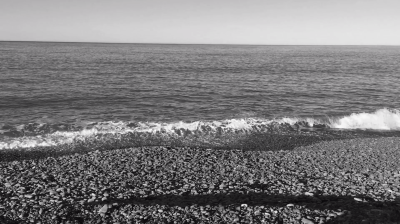
Source. From Da Verdade e do Tempo (00:00:06), by S. Santiago, 2020. Copyright 2020 by Sally Santiago.
Figure 1 O fim da tarde ao dormir em pedras, Kaikoura — Nova Zelândia

Source. From Da Verdade e do Tempo (00:00:27), by S. Santiago, 2020. Copyright 2020 by Sally Santiago.
Figure 2 In the morning when you wak e up without opening the window
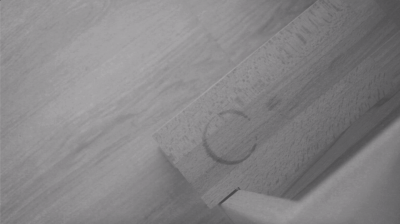
Source. From Da Verdade e do Tempo (00:00:44), by S. Santiago, 2020. Copyright 2020 by Sally Santiago.
Figure 3 One more wander, one more drink
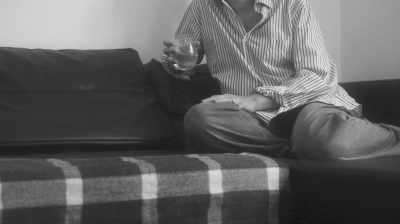
Source. From Da Verdade e do Tempo (00:01:05), by S. Santiago, 2020. Copyright 2020 by Sally Santiago.
Figure 4 One more wander, one more drink
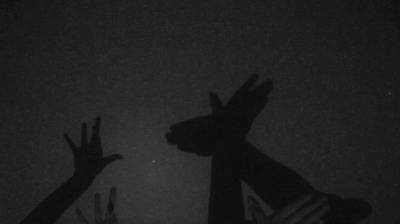
Source. From Da Verdade e do Tempo (00:02:01), by S. Santiago, 2020. Copyright 2020 by Sally Santiago.
Figure 5 I don't know if it was yesterday or if it is still today

Source. From Da Verdade e do Tempo (00:01:37), by S. Santiago, 2020. Copyright 2020 by Sally Santiago.
Figure 6 One more wander, one more drink, one more mark
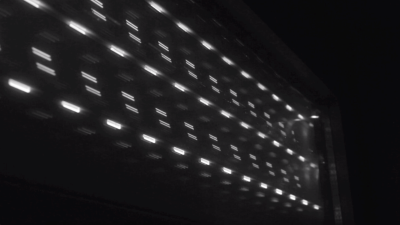
Source. From Da Verdade e do Tempo (00:00:22), by S. Santiago, 2020. Copyright 2020 by Sally Santiago.
Figure 7 In the morning, when looking at a window
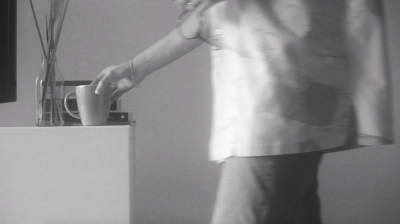
Source. From Da Verdade e do Tempo (00:01:31), by S. Santiago, 2020. Copyright 2020 by Sally Santiago.
Figure 8 One more wander, one more exchange
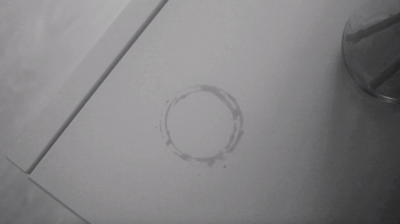
Source. From Da Verdade e do Tempo (00:00:46), by S. Santiago, 2020. Copyright 2020 by Sally Santiago.
Figure 9 One more wander, one more drink, one more mark, time goes by
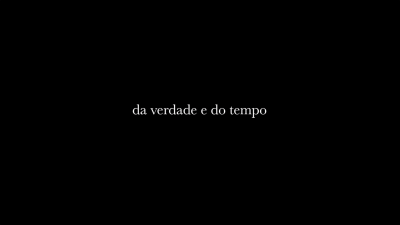
Source. From Da Verdade e do Tempo (00:03:32), by S. Santiago, 2020. Copyright 2020 by Sally Santiago.
Figure 10 The answer
Referências
Barthes, R. (2017). A câmara clara (M. Torres, Trad.). Edições 70. (Trabalho original publicado em 1980) [ Links ]
Benjamin, W. (1992). Sobre arte, técnica, linguagem e política (M. Alberto, M. A. Cruz & M. L. Moita, Trad.). Relógio d’Água. (Trabalho original publicado em 1936) [ Links ]
Flores, T. M. (2005). Fotografia, auto-retrato e autobiografia. Comunicação Pública, 1(2), 121-144. https://doi.org/10.4000/cp.9123 [ Links ]
MoMA. (s.d.). Nauman, B. Art make-up: No. 1 white, No. 2 pink, No. 3 green, No. 4 black. MoMA Learning.https://www.moma.org/learn/moma_learning/bruce-nauman-art-make-up-no-1-white-no-2-pink-no-3-green-no-4-black-1967-1968/ [ Links ]
Santiago, S. (2020). Da verdade e do tempo (videoarte). Acervo particular. [ Links ]
Varela, F. (2010). El autorretrato videográfico: The video art self-portrait. Revista de Humanidades, 21, 69-85. [ Links ]
Zambrano, M. (2009). Las palabras del regreso. Catedra. [ Links ]
Received: June 25, 2021; Revised: August 05, 2021; Accepted: August 12, 2021











 texto em
texto em 



